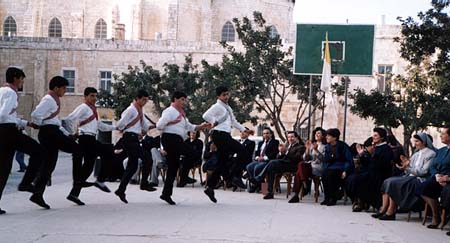 Lebanese film and TV production company, Darkside, recently undertook the production of a full length Lebanese feature film on High Definition. The musical comedy, titled L
Lebanese film and TV production company, Darkside, recently undertook the production of a full length Lebanese feature film on High Definition. The musical comedy, titled L
“We started shooting for this film in September 2004,” says Marwan Tarraf, CEO of Darkside. “Post production began in January 2005. The film was cut in
“Also, HD tapes are cheaper than film stock; HD is faster than film and requires less people on the set; it also doesn’t require rehearsals before rolling the camera. That means a big chunk of the budget could be re-routed to improving the sets, costumes, actors and other factors.”
However, Garry Turnball, director of photography, admits that only 90% of the film was shot on HD. For slow motion, the company still reverted to film. “90% of the film was shot on 24P using the Sony HDCAM F-900/3. But the dance scenes were shot on the super16 using hi-speed for slow motion effects.”
“We used the ARRI SR3 for this,” explains Tarraf. “We have heard that the Varicam can be used for slow motion. But unlike the HDCAM which has a 2K resolution, the Varicam shoots on 1K, so we were not sure if it would be good for 35mm blow-ups. We were not willing to take that risk,” he adds.
The shoot was not without its challenges. For one, the director, Philip Aractinji, was skeptical about shooting on HD. “Aractinji wasn’t sure about the quality of HD. He believes it to be closer to video than film. So it took a lot of convincing to get him to agree to shoot on HD. And though he remained skeptical throughout the shoot, he was quite happy when we screened the 35mm copy,” explains Tarraf.
The production firm also had a problem with the video outputs from the Sony F-900. “We had a 17” Sony HD LCD monitor hooked to the camera using the HD-RGB outputs. We mounted a Miranda DVC-802 downconverter to the camera to get an analogue video output for the video assist. But we couldn’t get a picture when the camera was set on 24P. Miranda’s support team asked us to send the unit back to them thinking it had a problem. Only 10 days later did we realise that the unit did not support this option on 24P. So we looped the signal through the monitor to maintain continuity and purchased a portable HD player to check tapes on location,” says Tarraf.
For Darkside, one of the first companies to purchase HD equipment in the



